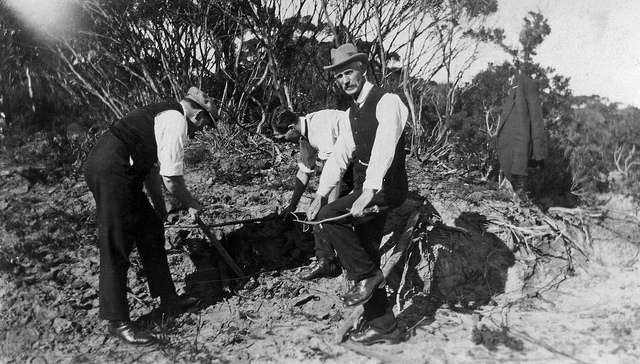I was recently asked by the media for my view on the proposal by the Federal Member for Wannon Dan Tehan to increase the income tax threshold to a level that would exempt a full-time minimum wage earner from paying income tax. While I expressed very strong reservations about most of the ideas raised in his article I did say I had some conceptual sympathy for this approach to the minimum wage – but that it had many other consequences, including the treatment of part-time employment, which needed to be considered.
The idea of setting the minimum tax threshold above the value of the minimum wage is not new. Indeed in 1922 the then Treasurer Stanley Bruce doubled the tax free threshold for a single person to £200 citing the minimum wage and declaring the policy was ‘in accord with proper and sound maxims of income tax law … one of which is that taxation should never touch what is necessary for the existence of the contributor.’ [1] (Bruce 1922) This ‘maxim’, while echoing Adam Smith’s concern about taxation on the ‘necessaries of life’, is contentious and was an idea which was rapidly lost in the exigencies of tax in the second world war and in the tax scales adopted after that time.
With the current minimum wage at $656.90 per week, this policy would involve the first tax threshold being lifted to $34,160. This compares with the current threshold of $18,200 and the effective threshold, taking account of the Low Income Tax Offset (LITO), of $20,540 – a level equal to 60.1 per cent of the minimum wage. The Henry / Australia’s Future Tax System (AFTS) Review put forward in December 2009 a proposal with an ‘indicative’ threshold of $25,000, a level equal to some 88.4 per cent of the then value of the minimum wage.
Using the most recent taxation statistics – for 2012-13 – an increase in the threshold to the level of the minimum wage would have excluded almost 16 per cent of taxpayers – although this group only contributed 1.3 per cent of income tax revenue. While this suggests an opportunity for an efficiency gain, such a policy has flow-on effects. Unless accompanied by increased marginal tax rates it would also have resulted in a further 12.3 per cent loss in tax revenue from those earning above the threshold, as they would also benefit from the higher threshold. It was for this reason that, when the AFTS proposed a higher threshold, this also involved raising the marginal tax rate to 35 per cent for taxpayers in the first tax bracket.
As well as excluding full-time minimum wage employees, a high income tax threshold would also affect other groups, in particular part-time workers. Analysis of data from Wave 13 of the Household Income and Labour Dynamics Australia (HILDA) Survey indicates that in 2012-13 the proportion of adult part-time employees paying income tax would decline from just under 80 per cent with the existing threshold, to less than half with a threshold based on the minimum wage.
Although many part-time workers have taken this type of employment because they have been unable to find full-time work, or are constrained by caring or other responsibilities, a very significant group do so because of choice. Should the tax system reward this choice? While our current income tax system simply considers actual income as evidence of an individual’s capacity to pay, another possible principle is to take account of their ‘capacity to make’. Such an approach might be seen as leading to a more efficient and less distortionary taxation system, as it would be neutral with respect to effort. Moving to such a presumptive tax system – based upon for example a person’s potential earning capacity – may be a step too far. But nevertheless the question remains whether the design of the tax system should seek to exclude those who have chosen to make a relatively smaller effort.
Having regard to this, differentiating on the basis of working hours has been a feature of earned income tax credits directed at low income earners in a number of countries and perhaps provides another pathway. While such policies are not without their own pitfalls, this could be considered as a more targeted approach to reducing the tax burden on low waged workers.
A final issue implicit in the concept of excluding minimum wage earners from the income tax system is the implication for the adjustment of the scales over time. Effectively the principle would involve a form of tax indexation with the threshold being adjusted annually in line with any changes in the minimum wage.
These considerations of course only impact on one set of minimum wage workers – those without children. Those with children gain net transfers much greater than their tax liabilities to much higher levels of income. In the case of a couple with two young children who are renting and have one member staying at home looking after the children, no effective tax is paid until their income reaches almost $70,000 – effectively 3.9 times the tax free threshold.
So while the idea of raising the tax free threshold to the level of the minimum wage has some intuitive appeal, unless accompanied by much higher marginal tax rates it would be very expensive. It does though some important questions about the design of the tax system which are worth considering. Furthermore a full-time working tax credit may achieve the same result in a much more efficient manner.
This article is based on Bray, R J, 2015. 100 years of the minimum wage and the Australian tax and transfer system: what has happened, what have we learnt and what are the challenges? Australian Tax Forum. 30(4) 819-844.
[1] Bruce, Stanley (1922) ‘Income Tax Assessment Bill Second Reading Speech’, Commonwealth, Parliamentary Debates, House of Representatives, 2 October 1922.





Recent Comments